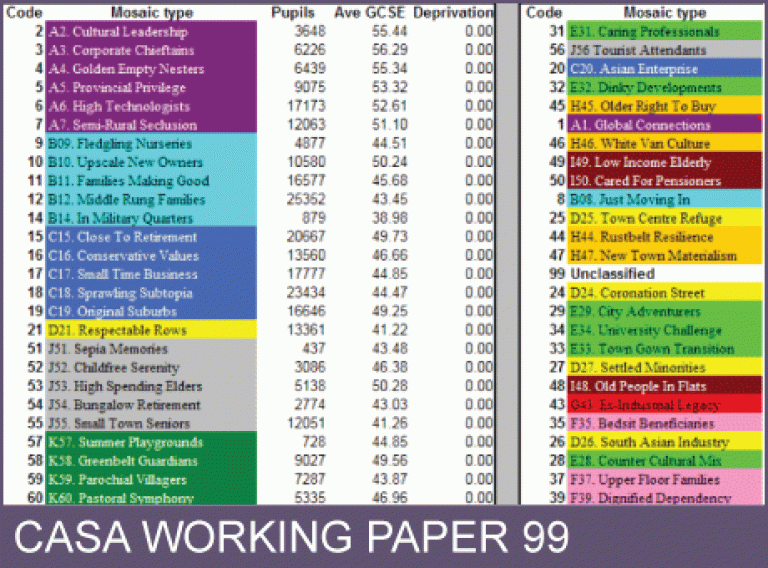CASA Working Paper 99

1 November 2005
Classifying pupils by where they live : how well does this predict variations in their GCSE results?
Classifying consumers according to the type of neighbourhood in which they live is now standard practice among most of Britain's successful consumer facing organisations. In recent years these 'geodemographic' classifications have become increasingly used in public sector applications. Their use has made it possible not just to gain a clearer understanding of the level of inequalities that exist between different types of neighbourhood but also to understand which policy interventions are likely to be most successful in different localities throughout the country.
This paper summarises key findings resulting from the appending of the UK Mosaic neighbourhood classification system to the records of the Pupil Level Annual School Census. The most significant of these findings is that other than the performance of the pupil at an earlier key stage test the type of neighbourhood in which a pupil lives is a more reliable predictor of a pupil's GCSE performance than any other information held about that pupil on the PLASC database. Analysis then shows the extent to which the performance of pupils from any particular type of neighbourhood is also incrementally affected by the neighbourhoods from which the other pupils in the school they attend are drawn. It finds that whilst a pupil's exam performance is affected primarily by the social background of people he or she may encounter at home, the social background of fellow school pupils is of only marginally lower significance. These findings suggest that so long as pupils' GCSE performances are so strongly affected by the type of neighbourhood in which they live, a school's league position bears only indirect relationship to the quality of school management and teaching. A better measurement of the latter would be a league table system which took into account the geodemographic profile of each school's pupil intake. The paper concludes with discussion of the relevance of these findings to the sociology of education, to the debate on consumer choice in public services, to the general appropriateness of adjusting public sector performance metrics to take into account the social mix of service users and to parental strategies in the educational sector in particular
This working paper is available as a PDF. The file size is 384KB.
Authors: Richard Webber, Tim Butler
Publication Date: 1/12/2005
 Close
Close

